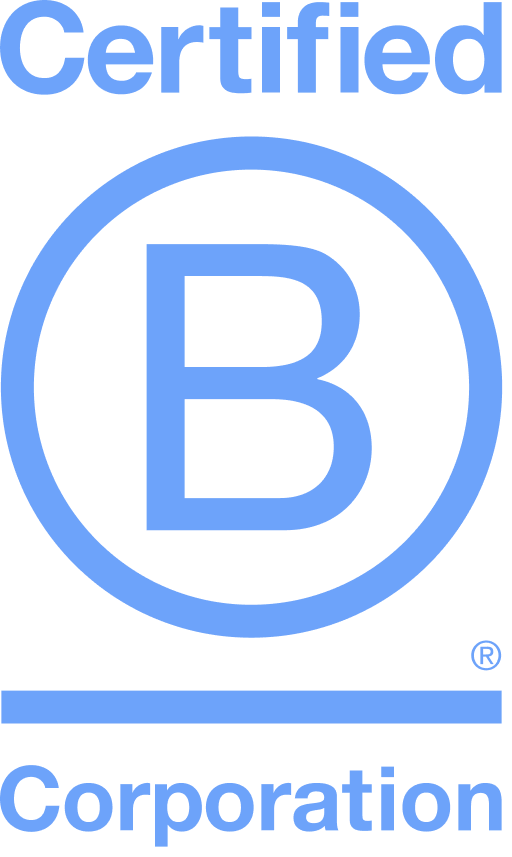What Is Accounts Payable (AP)?
Accounts Payable (AP) refers to the money a company owes to its suppliers or vendors for goods and services received but not yet paid for. This liability represents a short-term debt that must be settled within a specific period, typically within 30 to 90 days.
Accounts Payable Example
An example of Accounts Payable (AP) is when a retail store orders inventory from a supplier. After receiving the goods, the store gets an invoice for $50,000, payable within 30 days. This $50,000 becomes part of the store’s accounts payable, representing a short-term liability on its balance sheet.
Until the payment is made, the store’s accounts payable balance reflects this outstanding amount owed to the supplier. If the store pays the invoice within 30 days, the accounts payable balance decreases by $50,000, and the store’s cash or bank account decreases by the same amount.
What Is Accounts Receivable (AR)?
Accounts Receivable (AR) refers to the money a company is owed by its customers for goods or services that have been delivered but not yet paid for. This amount represents a short-term asset on the company’s balance sheet and indicates the credit extended to customers.
Businesses record accounts receivable when they allow customers to purchase on credit, expecting payment within a specific time frame, typically 30 to 60 days.
Accounts Receivable Example
An example of Accounts Receivable (AR) is when a graphic design agency completes a project for a client and issues an invoice for $2,000, payable within 30 days. Until the client makes the payment, this $2,000 is recorded as accounts receivable on the agency’s balance sheet, reflecting the amount owed by the client.
The accounts receivable balance decreases when the client pays the invoice, and the agency’s cash or bank account increases by the same amount.
Differences between Accounts Payable and Accounts Receivable
Accounts Payable (AP) and Accounts Receivable (AR) represent opposite sides of a company’s balance sheet and involve different financial transactions. Here are the key differences between the two:
Definition:
Accounts Payable (AP): Represents the money a company owes to its suppliers or vendors for goods and services received but not yet paid for. It is a liability.
Accounts Receivable (AR): Represents the money owed to a company by its customers for goods or services delivered but not yet paid for. It is an asset.
Role on the Balance Sheet
- AP: Accounts payable is listed under current liabilities on the balance sheet. This categorization is because these are amounts the company is expected to pay in the short term, typically within one year. The balance in accounts payable increases when the company receives goods or services on credit and decreases when the company pays those debts.
- AR: Accounts receivable is listed under current assets on the balance sheet. This is because it represents money that the company expects to collect in the short term, usually within one year. When a company sells goods or services on credit, accounts receivable increases, and when the customer pays, it decreases.
Cash Flow Impact
- AP: Accounts payable management directly impacts cash outflows. When a company pays its suppliers, it reduces its cash balance. Effective AP management involves balancing the timing of these payments to optimize cash flow, such as taking advantage of early payment discounts while avoiding late fees. Delaying payments without damaging supplier relationships can help a company maintain liquidity.
- AR: Accounts receivable management directly impacts cash inflows. When customers pay their invoices, the company’s cash balance increases. Efficient AR management aims to collect payments as quickly as possible to maintain a steady cash flow. Offering credit terms that encourage prompt payment, such as discounts for early payment, and actively following up on overdue accounts can help reduce the days sales outstanding (DSO) and minimize the risk of uncollected debts.
Management Focus
- AP: The focus of accounts payable management is to ensure timely and accurate payments to suppliers while maximizing cash flow. This includes negotiating favorable payment terms, taking advantage of early payment discounts, and avoiding late payment penalties. Effective AP management also involves maintaining good relationships with suppliers, as these relationships can provide benefits such as better credit terms and priority access to goods and services.
- AR: The focus of accounts receivable management is to ensure timely collection of payments from customers to maintain healthy cash flow. This involves setting appropriate credit policies, monitoring customer creditworthiness, issuing invoices promptly, following up on overdue payments, and managing disputes effectively. Efficient AR management helps minimize bad debts and write-offs, which can negatively impact profitability.
Impact on Working Capital
- AP: By extending payment terms with suppliers, companies can effectively increase their working capital. This means the company has more funds available for other operational needs since it retains cash for a longer period before paying its obligations.
- AR: Efficient management of accounts receivable improves working capital by ensuring quicker cash inflows from customers. Shortening the collection cycle means the company has more cash on hand to meet other financial obligations or invest in growth opportunities.
Operational Examples
- AP Example: A company purchases raw materials from a supplier to produce its products. The supplier delivers the materials and issues an invoice for $10,000, payable in 60 days. This amount is recorded in the company’s accounts payable ledger. As the due date approaches, the company plans its cash flow to ensure it can pay the invoice on time without negatively affecting its operations.
- AR Example: A graphic design firm completes a project for a client and issues an invoice for $5,000, due in 30 days. The $5,000 is recorded in the firm’s accounts receivable ledger. The firm follows up with the client if payment is not received by the due date, ensuring that it can continue to operate without cash flow disruptions.
Financial Reporting and Analysis
- AP: Accounts payable is an important figure for financial analysts and investors, as it can provide insights into a company’s liquidity, operational efficiency, and credit management. High accounts payable balances may indicate that a company is leveraging supplier credit effectively, but they can also signal potential cash flow issues if the company is delaying payments due to cash shortages.
- AR: Accounts receivable is also closely monitored by financial analysts and investors, as it reflects a company’s effectiveness in collecting payments. A high accounts receivable balance may indicate that the company is generous with credit terms or having difficulty collecting payments, potentially impacting cash flow and liquidity. Key metrics such as days sales outstanding (DSO) help assess the efficiency of a company’s receivables management.
Risks and Challenges
- AP: The main risks associated with accounts payable include the potential for late payment fees, damage to supplier relationships, and negative impacts on the company’s credit rating if payments are delayed excessively. Companies must carefully manage their cash flow to ensure they can meet their payment obligations without compromising their financial stability.
- AR: The risks related to accounts receivable primarily involve non-payment or delayed payment by customers. This can lead to bad debts, write-offs, and a negative impact on cash flow and profitability. Companies need to have strong credit policies and collections processes in place to mitigate these risks and ensure that they can convert receivables into cash effectively.
How to Record Accounts Receivable
To record Accounts Receivable (AR), start by generating an invoice when goods or services are provided on credit. Include details like the sale date, description, price, total amount due, payment terms, and due date, then send it to the customer.
Next, record a journal entry:
- Debit Accounts Receivable: Increases the AR asset account to show the amount owed by the customer.
- Credit Sales Revenue: Increases the sales revenue account to recognize income earned.
Post this entry to the general ledger, and regularly monitor the AR ledger to track outstanding invoices. Reconcile the AR balance with the AR aging report periodically to ensure accuracy.
When a customer pays, record the payment:
- Debit Cash/Bank: Increases the cash account.
- Credit Accounts Receivable: Decreases the AR balance.
For uncollectible debts, write them off by:
- Debit Bad Debt Expense: Increases the expense account.
- Credit Accounts Receivable: Decreases the AR balance.
What Do Accounts Payable and Accounts Receivable Have in Common?
Accounts Payable (AP) and Accounts Receivable (AR) share several commonalities despite representing opposite sides of a company’s financial transactions:
- Impact on Cash Flow: Both AP and AR directly affect a company’s cash flow. AP represents cash outflows that need to be managed to maintain liquidity, while AR represents cash inflows that need to be collected promptly to ensure steady cash availability.
- Balance Sheet Placement: Both are recorded on the balance sheet, with AP listed as a current liability and AR listed as a current asset. They reflect short-term financial obligations and claims expected to be settled within a year.
- Involvement in Working Capital Management: Both play crucial roles in managing working capital. Efficient handling of AP ensures enough cash on hand to meet obligations, while effective management of AR helps optimize cash flow.
- Dependence on Timely Processes: Timely processing is essential for both. In AP, paying suppliers on time avoids penalties and maintains good relationships. In AR, timely collection from customers prevents bad debts and improves cash flow.
- Financial Management and Reporting: Both require accurate record-keeping and regular reconciliation to ensure correct financial reporting and healthy financial operations.
FAQ
Do I send an invoice to accounts payable or receivable?
Send an invoice to accounts receivable if you are requesting payment for goods or services provided. This means you are owed money. If you receive an invoice from a supplier or vendor, it goes to accounts payable because you owe money for goods or services received. Accounts receivable handles incoming payments, while accounts payable manages outgoing payments.
Can AP and AR be done by the same person?
Yes, the same person can handle both Accounts Payable (AP) and Accounts Receivable (AR), especially in smaller businesses. However, separating these roles is advisable to reduce the risk of errors and prevent potential fraud. Proper checks and balances help maintain accurate financial records and ensure sound financial management.
What is the role of AP and AR?
Accounts Payable (AP) manages outgoing payments, ensuring the company pays its suppliers and vendors on time, maintaining good relationships and optimizing cash flow. Accounts Receivable (AR) manages incoming payments, ensuring timely collection from customers to maintain cash flow and reduce the risk of bad debts. Both roles are crucial for managing a company’s finances and liquidity.
Is accounts receivable or payable harder?
Accounts Receivable (AR) can be harder because it involves actively managing collections from customers, addressing disputes, and minimizing bad debts. Ensuring timely payments and maintaining customer relationships can be challenging. Accounts Payable (AP), while also important, generally involves tracking invoices and scheduling payments, which is more straightforward but still requires attention to detail to avoid late fees or errors.





